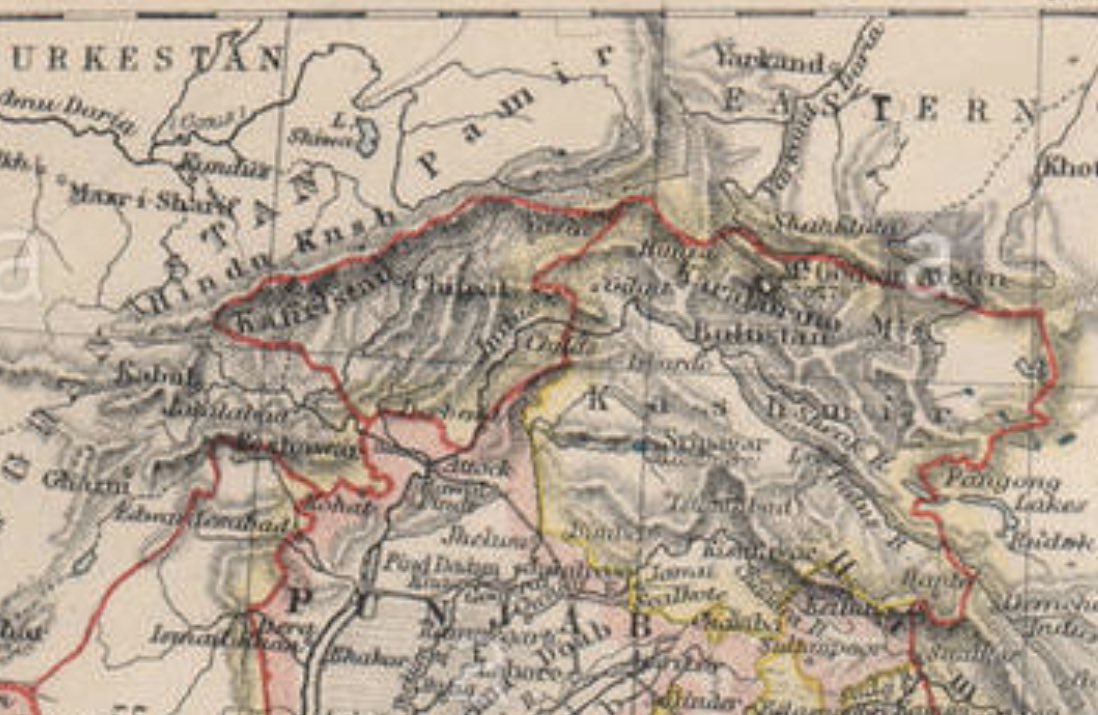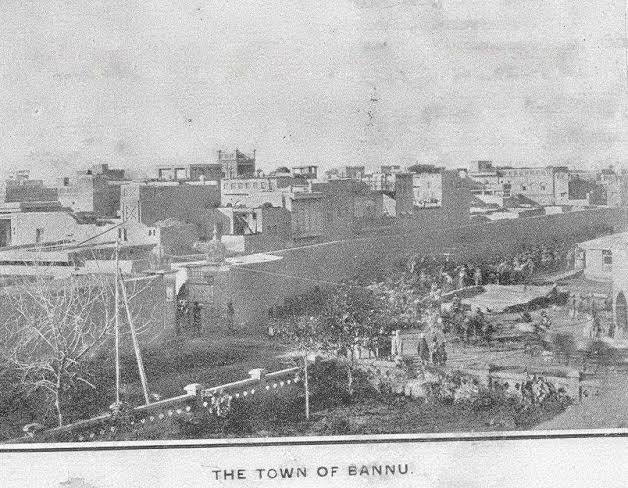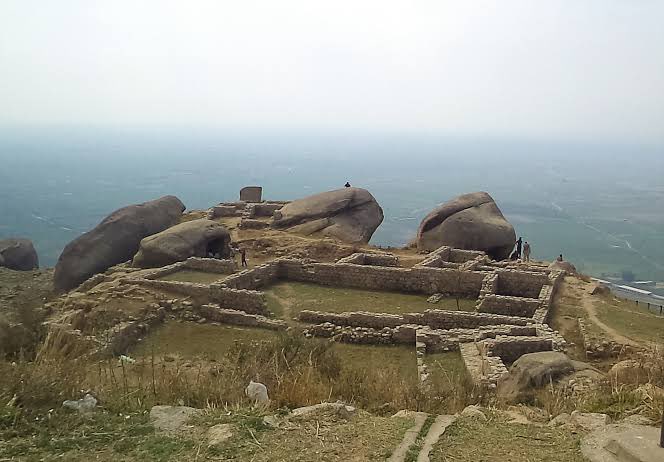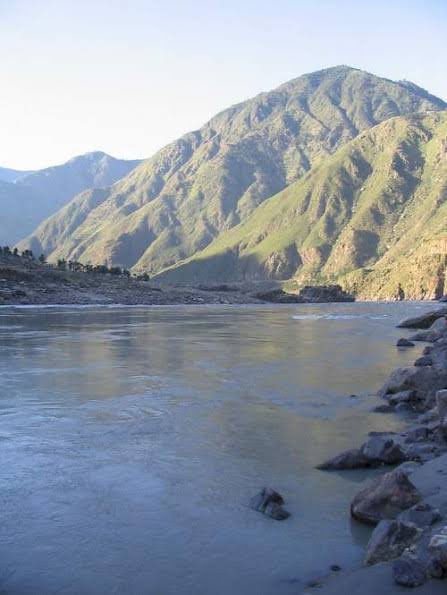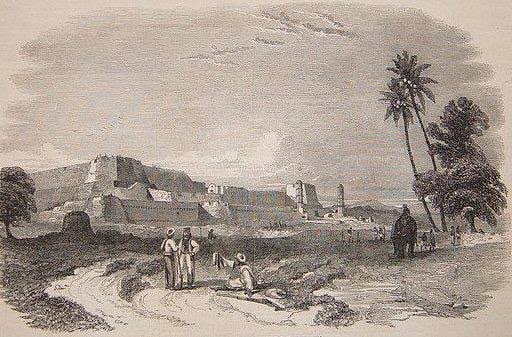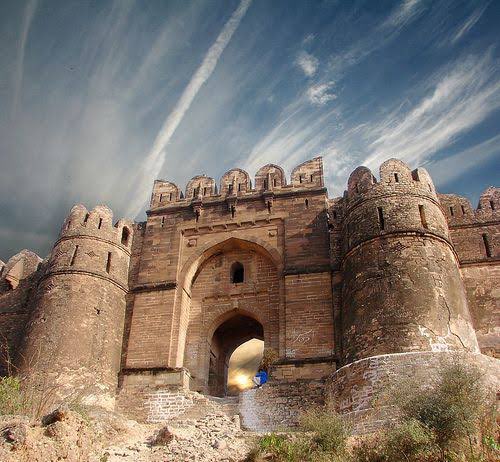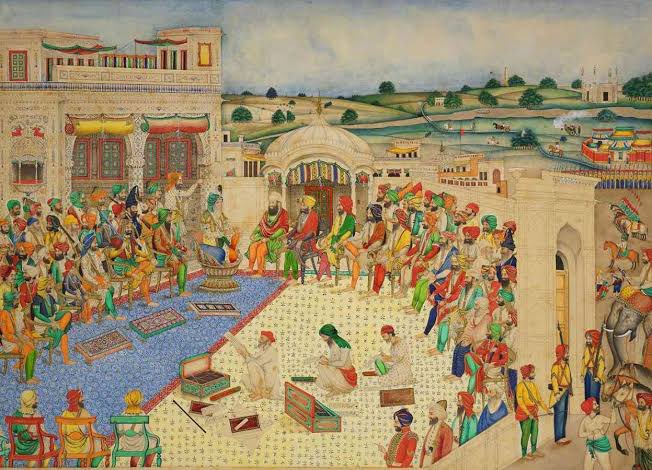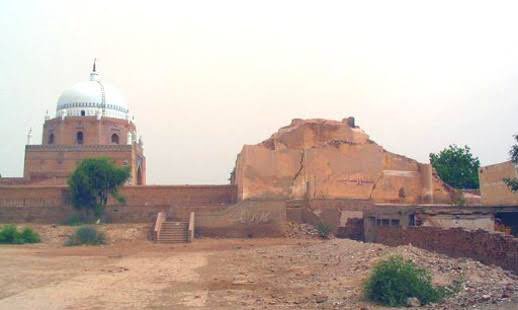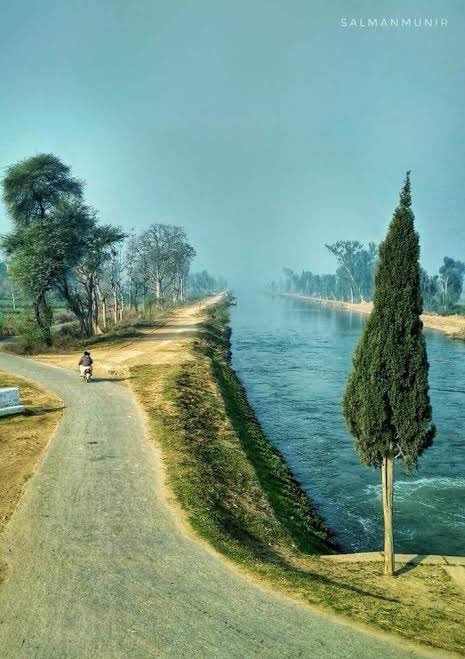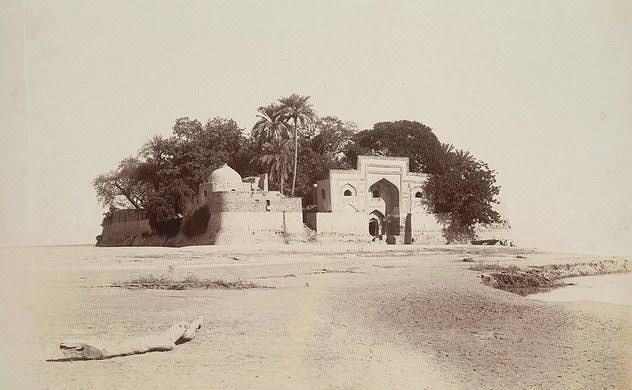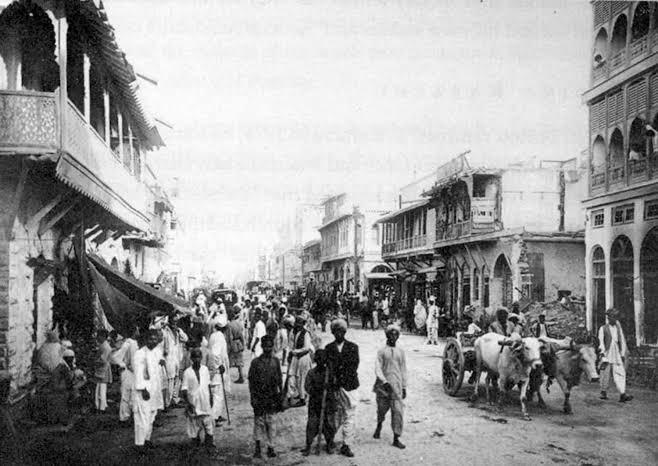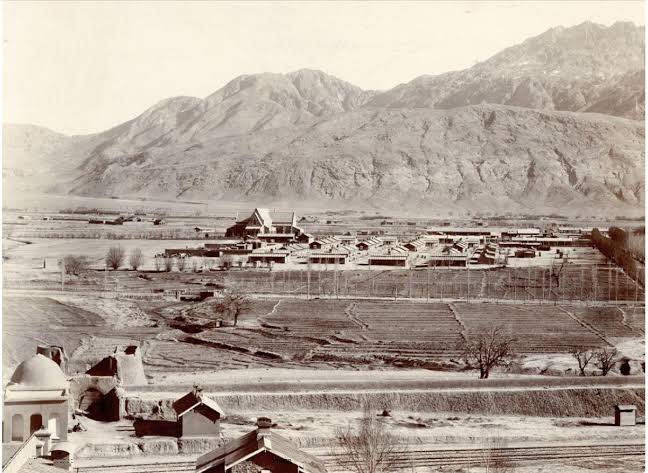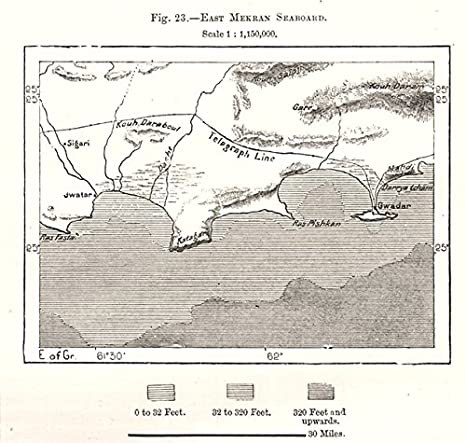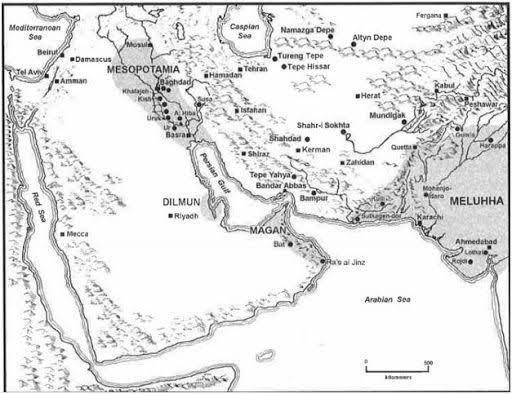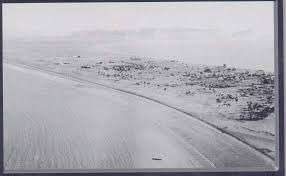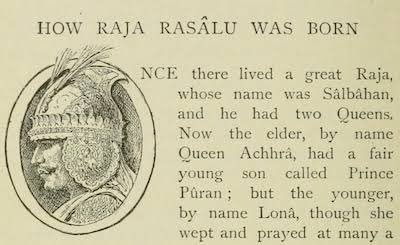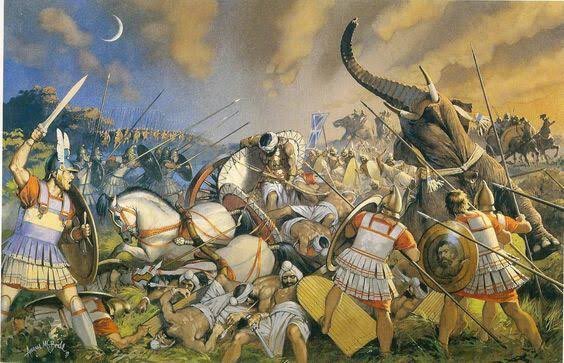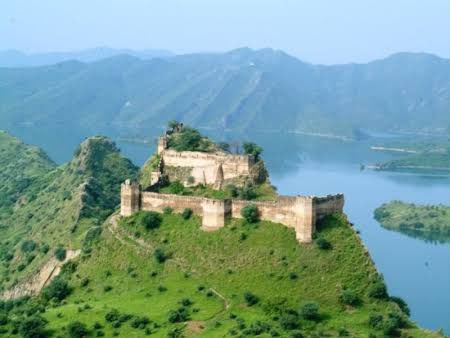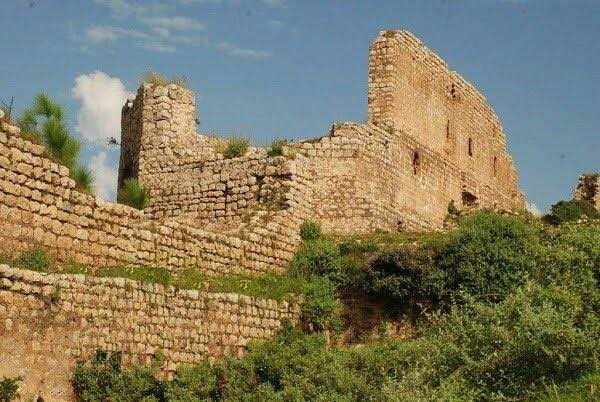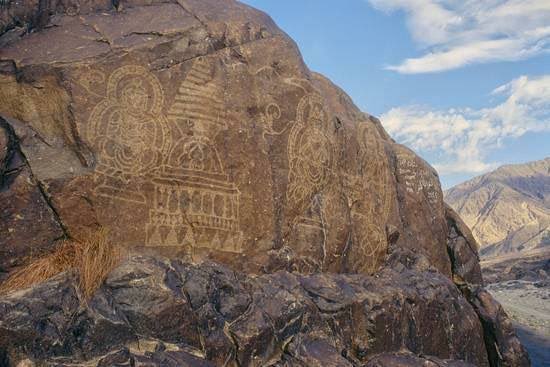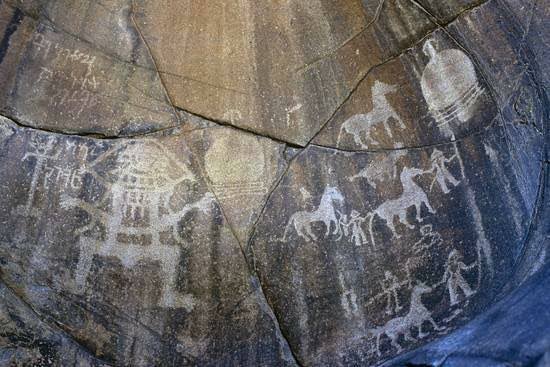Lesser Known Fact:
Did you know that Peshawar’s ancient name actually was city of flowers, that Sialkot is named after a Punjabi folk hero, that Gwadar means door of the winds or that the Margalla hills are named after a dragon king?
[Thread on roots of names of regions]
regions]
Did you know that Peshawar’s ancient name actually was city of flowers, that Sialkot is named after a Punjabi folk hero, that Gwadar means door of the winds or that the Margalla hills are named after a dragon king?
[Thread on roots of names of
 regions]
regions]
Let’s start with KPK.
Chitral.
The name is derived from the Sanskrit term ‘Ksetra’ for field. The word Chitral also means field in the Chitrali language and is pronounced as ‘Tchetrar’ which is similar to Ksetra.
Chitral.
The name is derived from the Sanskrit term ‘Ksetra’ for field. The word Chitral also means field in the Chitrali language and is pronounced as ‘Tchetrar’ which is similar to Ksetra.
Swat.
It’s name is derived from the ancient Sanskrit name of the swat river i.e. Suwastu which means fair and noble dwelling area or generally a good place to live in.
Swat also later had a kingdom called Udyaana which literally meant Garden due to Swat’s beauty.
It’s name is derived from the ancient Sanskrit name of the swat river i.e. Suwastu which means fair and noble dwelling area or generally a good place to live in.
Swat also later had a kingdom called Udyaana which literally meant Garden due to Swat’s beauty.
Bannu.
Bannu is derived from the ancient Sanskrit name of a river which ran through it i.e. Varnu.
The earliest mention of it comes from Panini which speaks of the river and it’s surrounding as Varnu. Varnu in Sanskrit often linked to burning or generally the sun.
Bannu is derived from the ancient Sanskrit name of a river which ran through it i.e. Varnu.
The earliest mention of it comes from Panini which speaks of the river and it’s surrounding as Varnu. Varnu in Sanskrit often linked to burning or generally the sun.
We also witness this in the name of Benares in India where the river Varuna from which it derived its name was altered into Benares.
The neighbouring Gomal and Kurram valleys are also named after ancient Sanskrit names of rivers i.e. ‘Gomati’ and ‘Krumu’.
The neighbouring Gomal and Kurram valleys are also named after ancient Sanskrit names of rivers i.e. ‘Gomati’ and ‘Krumu’.
Swabi.
Although the origin of Swabi itself isn’t known, Swabi holds within it Hund; the capital of Hind Shahis.
Hund is derived from the name Udbandapur which meant “City on the river”. It also contains Salatura which produced 2 great ancient people.
Although the origin of Swabi itself isn’t known, Swabi holds within it Hund; the capital of Hind Shahis.
Hund is derived from the name Udbandapur which meant “City on the river”. It also contains Salatura which produced 2 great ancient people.
One was Panini whose considered the father of linguistics. His texts called the Ashtadyahi is one of best early linguistic works in the world.
The second man was the monk Marananta who travelled to the kingdom of Baekje to introduce Buddhism in Korea. https://twitter.com/mhuzaifanizam/status/1304872560996253697
The second man was the monk Marananta who travelled to the kingdom of Baekje to introduce Buddhism in Korea. https://twitter.com/mhuzaifanizam/status/1304872560996253697
Hazara.
The region of Hazara got its modern name in 1399 when Amir Timur was credited to have left a garrison of 1000 Karluk Turks in the region on his departure from the Indus. The 1000 men garrison was known as Hazara and thus the name.
However in ancient time’s it was -
The region of Hazara got its modern name in 1399 when Amir Timur was credited to have left a garrison of 1000 Karluk Turks in the region on his departure from the Indus. The 1000 men garrison was known as Hazara and thus the name.
However in ancient time’s it was -
In ancient times it was known as Urasa/Urasha. It’s people and it’s king Abisares fought against Alexander at the rock of Aornos (Pir Sar Mountain). They later joined Chandragupta and Chanakya’s ‘Tribal Army’ against the Nandas, laying the foundation of the Mauryan Empire. https://twitter.com/mhuzaifanizam/status/1326941856215732235
Haripur:
The town was founded by Hari Singh Nalwa, one of the most crucial characters of the Khalsa Empire. He took over Hazara, Peshawar and Multan for the Sikhs.
Hari was killed by the Afghans in Jamrud in 1937 but the despotic reign of terror of the Khalsa empire remained.
The town was founded by Hari Singh Nalwa, one of the most crucial characters of the Khalsa Empire. He took over Hazara, Peshawar and Multan for the Sikhs.
Hari was killed by the Afghans in Jamrud in 1937 but the despotic reign of terror of the Khalsa empire remained.
Peshawar.
Peshawar has had more than 12 different ancient names in various languages. One theory states the origin to be ‘Purushapura (City of men’ however this is not confirmed. The oldest, almost 2000 year old, reference to it refers to it as Poshapura (city of flowers).
Peshawar has had more than 12 different ancient names in various languages. One theory states the origin to be ‘Purushapura (City of men’ however this is not confirmed. The oldest, almost 2000 year old, reference to it refers to it as Poshapura (city of flowers).
This name is derived from the Sanskrit word Pushpa for flower.
This was corrupted into Parashawar until in the 1500s it was renamed Peshawar by Akbar from the Persian words Pesh-Awardan meaning the first coming city or the frontier city.
https://www.thefridaytimes.com/the-forgotten-ancient-metropolis-of-peshawar/
This was corrupted into Parashawar until in the 1500s it was renamed Peshawar by Akbar from the Persian words Pesh-Awardan meaning the first coming city or the frontier city.
https://www.thefridaytimes.com/the-forgotten-ancient-metropolis-of-peshawar/
Punjab.
Potohar.
Thought we donot have any ancient source which refers to potohar’s origins, the name is possibly derived from the Sanskrit words Prshta (Back) - war (area). It’s name is said to signify its location at the back of the Indus River.
Potohar.
Thought we donot have any ancient source which refers to potohar’s origins, the name is possibly derived from the Sanskrit words Prshta (Back) - war (area). It’s name is said to signify its location at the back of the Indus River.
Taxilla - Margalla Hills.
Both Taxilla and Margalla hills derive their name from an ancient Serpent king referred to as one of the 8 great dragon kings in eastern mythologies.
Even the word Margalla comes from “Mar - I - Qilla” i.e. “Serpent fort”
Read more about it here. https://twitter.com/mhuzaifanizam/status/1294338847220862979
Both Taxilla and Margalla hills derive their name from an ancient Serpent king referred to as one of the 8 great dragon kings in eastern mythologies.
Even the word Margalla comes from “Mar - I - Qilla” i.e. “Serpent fort”
Read more about it here. https://twitter.com/mhuzaifanizam/status/1294338847220862979
Lahore:
Many theories exist on the origin of the name of Lahore, though none are confirmed. What we do know is that Lahore was the name of the banks of the Irvati (Ravi River) and not of a city. Most accounts refer to the city as Mandahukur. Possibly linked to the Madra tribes.
Many theories exist on the origin of the name of Lahore, though none are confirmed. What we do know is that Lahore was the name of the banks of the Irvati (Ravi River) and not of a city. Most accounts refer to the city as Mandahukur. Possibly linked to the Madra tribes.
Multan.
The roots of Multan are in Sanskrit from the word Mool - Sthan meaning the ‘base area’ or the ‘root area’. This is also attached to the old name of Multan i.e. Mulasthana. The name possibly signifies Multan’s status due to the sun temple of Multan.
The roots of Multan are in Sanskrit from the word Mool - Sthan meaning the ‘base area’ or the ‘root area’. This is also attached to the old name of Multan i.e. Mulasthana. The name possibly signifies Multan’s status due to the sun temple of Multan.
You can read more about Multan’s early history and it’s sun temple over here. https://twitter.com/mhuzaifanizam/status/1333478984156372995
Sindh.
Larkana.
The name of the city of Larkana is derived from the name of the upper Sindhi tribes who settled in its neighbourhood i.e. the ‘Lariks’. Before the modern city, it was a fertile land in the Mughal period known as ‘Chandko Pargana’.
Larkana.
The name of the city of Larkana is derived from the name of the upper Sindhi tribes who settled in its neighbourhood i.e. the ‘Lariks’. Before the modern city, it was a fertile land in the Mughal period known as ‘Chandko Pargana’.
Sukkur.
It is not properly known what both Sukkur and Bhakkar mean although the former is possibly derived from the word ‘Sakhar’ for favourable.
The city itself is new however the Rohri hills of Sukkur played an instrumental role in the dawn of civilization in South Asia.
It is not properly known what both Sukkur and Bhakkar mean although the former is possibly derived from the word ‘Sakhar’ for favourable.
The city itself is new however the Rohri hills of Sukkur played an instrumental role in the dawn of civilization in South Asia.
Karachi.
The origin of this name is also not properly known, however most people view the name to be linked to Mai Kolachi; a Baloch fisherwoman who is associated with the tale of founding a fishing village near Lyari, laying the foundation of Karachi.
The origin of this name is also not properly known, however most people view the name to be linked to Mai Kolachi; a Baloch fisherwoman who is associated with the tale of founding a fishing village near Lyari, laying the foundation of Karachi.
Balochistan.
Quetta.
The name of Quetta is supposedly derived from the word Kwatt for fort since the town is said to be originated from a fort in which the old city is located. It’s earliest history comes from the invasion of Mahmud Ghaznavi over the region.
Quetta.
The name of Quetta is supposedly derived from the word Kwatt for fort since the town is said to be originated from a fort in which the old city is located. It’s earliest history comes from the invasion of Mahmud Ghaznavi over the region.
Kalat.
Kalat just like Quetta also means a fort but in the Persian language.
It was the capital of the Khanate of Kalat and a wonder of a city. Surrounded on all sides by high walls with a moat around them and gardens within. It is said to have resembled Herat.
Kalat just like Quetta also means a fort but in the Persian language.
It was the capital of the Khanate of Kalat and a wonder of a city. Surrounded on all sides by high walls with a moat around them and gardens within. It is said to have resembled Herat.
Makran.
Makran’s etymology is also not known but there are 2 theories.
The first one states that the clearly Persian name is derived from the words Mahi - Khoran i.e. Fish eating due to the fisherman of the Makran coast who traditionally ate fish as staple diet.
Makran’s etymology is also not known but there are 2 theories.
The first one states that the clearly Persian name is derived from the words Mahi - Khoran i.e. Fish eating due to the fisherman of the Makran coast who traditionally ate fish as staple diet.
The second theory states that the name is derived from the words Mak - Kiran which means coast of the Maka tribe who were the ancient inhabitants of this region. Maka itself is persiansed version of the ‘Magan’ which was the Mesopotamian name of Makran neighbouring Meluhha (IVC).
Gwadar.
The word Gwadar comes from the Balochi word ‘Gwat’ for ‘winds’ and the Persian/Balochi word ‘Dar’ for winds. The name itself means “Door Of The Winds”. It could be a product of the strong sea winds of the Makran Coast.
The word Gwadar comes from the Balochi word ‘Gwat’ for ‘winds’ and the Persian/Balochi word ‘Dar’ for winds. The name itself means “Door Of The Winds”. It could be a product of the strong sea winds of the Makran Coast.
Some 30 sources and a day was spent on this thread. I’ll upload the references later since I’m exhausted. Do share it if you found it intriguing.
Dar in Gwadar means door. I’m very sorry I was quite tired when I posted this so I couldn’t spell check.
Increasing a few areas
Sialkot.
Sialkot derives it’s name from the ancient Punjabi folk charachter Raja Sal and it’s name means The fort of Sal. Raja Sal was the father of Raja Rasalu whose the greatest punjabi folk hero. His tales include his travels in Punjab fighting demons
Sialkot.
Sialkot derives it’s name from the ancient Punjabi folk charachter Raja Sal and it’s name means The fort of Sal. Raja Sal was the father of Raja Rasalu whose the greatest punjabi folk hero. His tales include his travels in Punjab fighting demons
Raja Sal is also connected to the Mahabharata but we won’t be touching that part due to the length of this thread.
The ancient town of Sialkot was known as Sagala which fought a strong battle against Alexander and killed a number of high rank Macedonian officials but was razed.
The ancient town of Sialkot was known as Sagala which fought a strong battle against Alexander and killed a number of high rank Macedonian officials but was razed.
In AJ&K
Mirpur.
The city of Mirpur supposedly derives its name from a man named Miran Shah Ghazi who founded the old city around the mid 17th century.
According to some Miran was a tribal chief but according to others he was a religious Saint.
Mirpur.
The city of Mirpur supposedly derives its name from a man named Miran Shah Ghazi who founded the old city around the mid 17th century.
According to some Miran was a tribal chief but according to others he was a religious Saint.
Kotli.
Kotli is possibly derived from the words ‘Koh’ and ‘Telli’ which in the local dialect of the region means ‘surrounded by hills’ or ‘Below the hills’.
Kotli is possibly derived from the words ‘Koh’ and ‘Telli’ which in the local dialect of the region means ‘surrounded by hills’ or ‘Below the hills’.
In Gilgit Baltistan.
Gilgit.
No one has ever been fully successful in discovering Gilgit’s origin word. But it is known that the locals refer to the city as ‘Glit’ and most in the olden days called it ‘Sargin Glit’ meaning “The Happy Place of Gilgit”.
Gilgit.
No one has ever been fully successful in discovering Gilgit’s origin word. But it is known that the locals refer to the city as ‘Glit’ and most in the olden days called it ‘Sargin Glit’ meaning “The Happy Place of Gilgit”.
Chilas.
Chilas’s ancient name is said to have been ‘Shiltas’ or ‘Silvata’. Both in Sanskrit and Shina ‘Sila’ means rock which signifies Chilas’s ancient rock inscriptions.
Chilas has more rock inscriptions than any other place in the world, more than 35,000.
Chilas’s ancient name is said to have been ‘Shiltas’ or ‘Silvata’. Both in Sanskrit and Shina ‘Sila’ means rock which signifies Chilas’s ancient rock inscriptions.
Chilas has more rock inscriptions than any other place in the world, more than 35,000.
These include primitive pre historic rock and cave drawings as well as modern Buddhist petroglyphs. Chilas being the primary crossing of the auxiliary routes of the Silk route made it very famous in ancient travellers and hence many non Indus people also drew here.
Just putting this out there for people to understand:
Majority of these cities and regions were urban centres in the era when Buddhism was dominant in the region of modern Pakistan and since majority of our languages are Indo - Aryan, most of these cities were named
Majority of these cities and regions were urban centres in the era when Buddhism was dominant in the region of modern Pakistan and since majority of our languages are Indo - Aryan, most of these cities were named
In the local Prakrit of the region. Cities formed in later eras employed root words of the dominant language of that time, so majority of the smaller towns and regions have names in Persian and Iranic terms.
The thread was simply about root words of certain areas of Pakistan, please don’t link them to religions or cultures or any other controversial thing. Just wanted to increase your knowledge of Pakistan’s ancient history. Thank you
References
Journal of the Numismatic society.
Astadyayi of Panini.
Zoroastrianism - M. Stausberg.
The Proto Indo Aryans - T. Burrow.
Report on the archaeological survey of swabi district - S. N. Khan (Ancient Pakistan Journal).
Journal of the Numismatic society.
Astadyayi of Panini.
Zoroastrianism - M. Stausberg.
The Proto Indo Aryans - T. Burrow.
Report on the archaeological survey of swabi district - S. N. Khan (Ancient Pakistan Journal).
History of the Punjab Hill States - J. Hutchison.
Hari Singh Nalwa - V. Nalwa
Visual culture in South Asia - S. Mukherjee.
Oriental Studies P. 1 - H. Neville.
History of Pakistan - A. H. Dani.
55th publications of the University of Peshawar.
Hari Singh Nalwa - V. Nalwa
Visual culture in South Asia - S. Mukherjee.
Oriental Studies P. 1 - H. Neville.
History of Pakistan - A. H. Dani.
55th publications of the University of Peshawar.
Chronicles of the early Janjuas - Dr H. Khan.
Tales of the Punjab - F. A. Steele.
The Greeks in Bactria and India
Alexander the Great Vol. 2 - W.W. Tarn
Alexander’s campaign in Sind and Baluchistan - P. Herman.
The Geographic Journal Vol. 7 (1896)
Tales of the Punjab - F. A. Steele.
The Greeks in Bactria and India
Alexander the Great Vol. 2 - W.W. Tarn
Alexander’s campaign in Sind and Baluchistan - P. Herman.
The Geographic Journal Vol. 7 (1896)
Land Cover Atlas of Pakistan - The Balochistan Province.
Gazeteer of the Multan district.
Archaeological survey of India Vol. 5
Larkana District - Sociopolitcal profile.
The Making of modern Sindh - H. Khuhro
Studies on Karachi - S. Askari.
Gazeteer of the Multan district.
Archaeological survey of India Vol. 5
Larkana District - Sociopolitcal profile.
The Making of modern Sindh - H. Khuhro
Studies on Karachi - S. Askari.
The Gazetteer of West Pakistan.
History of Arghuns and Tarkhans of Sindh - M. H. Siddiqi.
History of Arghuns and Tarkhans of Sindh - M. H. Siddiqi.

 Read on Twitter
Read on Twitter![Lesser Known Fact: Did you know that Peshawar’s ancient name actually was city of flowers, that Sialkot is named after a Punjabi folk hero, that Gwadar means door of the winds or that the Margalla hills are named after a dragon king? [Thread on roots of names of regions] Lesser Known Fact: Did you know that Peshawar’s ancient name actually was city of flowers, that Sialkot is named after a Punjabi folk hero, that Gwadar means door of the winds or that the Margalla hills are named after a dragon king? [Thread on roots of names of regions]](https://pbs.twimg.com/media/EofQ5IbW8AIlDez.jpg)
